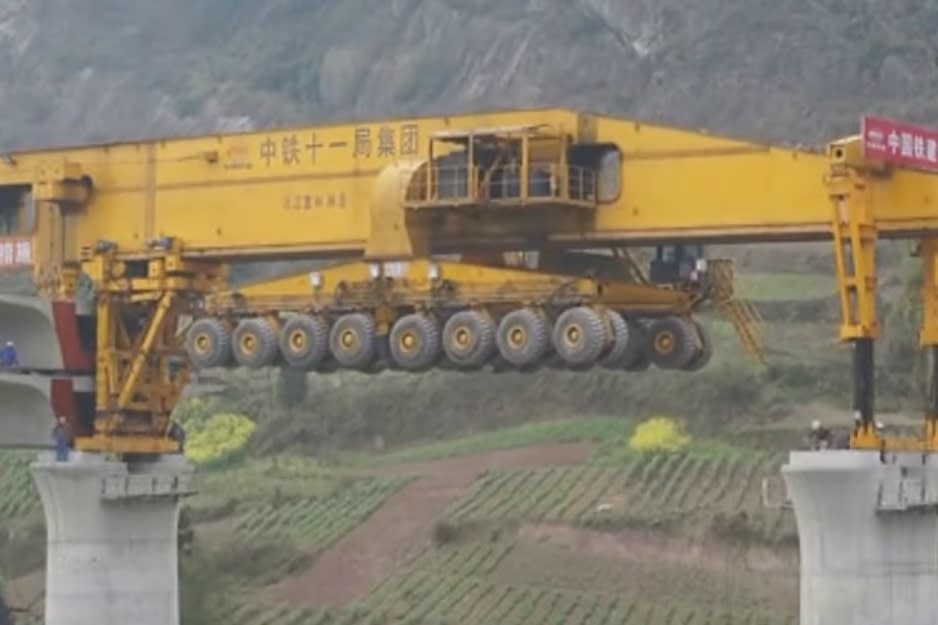kwaigonegin
Colonel
Most difficult person in the world to sing happy birthday song to.Tu You You from China shared the Nobel Medicine prize for her contributions in anti-malarial medicine.
Tu you you. LOL
Most difficult person in the world to sing happy birthday song to.Tu You You from China shared the Nobel Medicine prize for her contributions in anti-malarial medicine.

A new technology for building bridges eliminates the need for tip-happy cranes. A video shot in China shows a massive bridge girder erector completing a segment of rail bridge by placing a beam between support pillars. The SLJ900/32 weighs 580 tons and measures 300 feet in length. It was designed by the Shijiazhuang Railway Design Institute. The bridge under construction in the video connects the cities of Chongqing and Wanzhou.
This new bridge-building process may appear complicated, but it is in fact brilliantly simple. It begins when the machine picks up a new beam from the casting yard. The machine drives to the site of the bridge, where the pillars have already been erected. It lowers a pneumatic support structure, which stabilizes the machine as it extends out to the first pillar some distance away. A second support structure is lowered onto the pillar, at which point the first one is slid along the machine’s length to the join the second at the pillar. With both support structures in place, the machine has a solid foundation for laying down the new beam.
The machine now drives further forward, carrying the beam with it. The beam is lowered into place between the bridge’s starting point and the first column. With the beam secured, the machine drives backwards, taking the two portable support structures with it. When it returns with another beam, it drives along the first installed segment, and the process is repeated to place the next beam between the first and second columns.
The SLJ900/32 is supported by 64 wheels split up into four sections of 16 wheels each. Each section can rotate 90 degrees, enabling the entire machine to drive horizontally. This maneuverability comes in handy when picking up beams from the yard.
According to , the launching machines can erect about 730 spans in a lifetime, and 40 percent of them are able to assemble over a thousand. The average service life is over four years. China is using the machines mostly for the construction of high-speed rail viaducts. A detailed animation of the machine’s functions can be seen .
They are going to need it if they plan to build at a rate of more than 1 km of elevated HSR a day.
Not just innovation. When China attempts to win overseas orders against the competition, it's these sweat drenching, gut spilling persistence and tenacity saying never stop until they win that really catches the heart of people.
And the physiology of our brain has not changed since the old days. So it's less likely that we are seeing an increase in mental diseases.
It is my opinion that we are simply recognizing more issues as mental diseases, instead of just "plain crazy or possessed by spirits" back in the good ole days.
